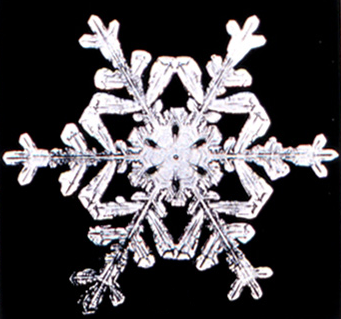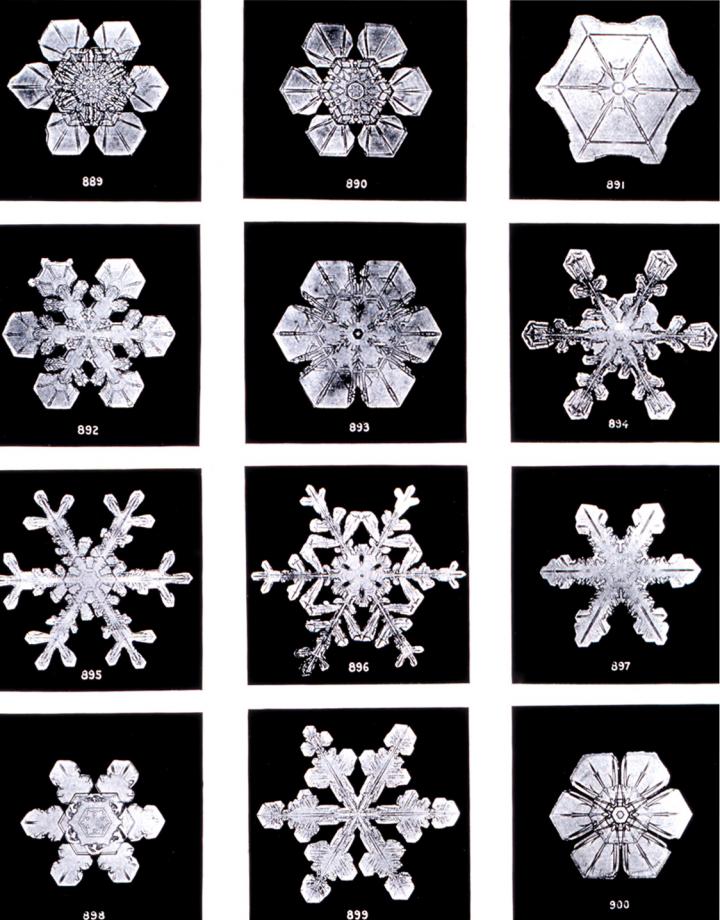
Who discovered that no two snowflakes are alike?
ADVERTISEMENT
I would like to comment on Tom's comment on photographing snow flames and window frost..I'd like to thank him for having the ability and patience to do such a thing ..if it wasn't for photographers such as him ..we that don't have that ability would never know the beauty of nature's artistic works of art..beautiful ! Thank you Tom!
I have studied Mr. Bently and amazing what he did under those cold conditions.I am also a photographer that photographed snow flakes and window frost. Very hard to accomplish in extreme cold conditions. Perhaps my methods will assist others attempting the same.
For window frost, it's on an outside storm window that had humid leaks. I'd have a very cold box (outside temp has to be no higher than 10.degs. Quickly I'd go in the house with the box, throw up the inside window and take and put the storm window in the box and run back outside. I'd have my camera equipment (high magnification) set the window on a supported base, vertically. Being cold I'd have time to focus and click. There were many pics on a window pane. This happened during the winter cold times.
For snow flakes, I'd have a window pane horizontal outside in the snow to collect the flakes. The brush away not wanted flakes and do the same as with the frost. Bently photos were a negative, he scraped away the black areas around the image leaving only the snowflake. Very time consuming. I could get a snow flake to fill the entire viewing area.
During a snow storm there are many different conditions that change the style of the snowflake. In one storm there could be 10 types of snowflakes. Humidity and temperatures affect a storm. There are wet large flakes and small dry flakes. I have photo displays on my images a few years ago and I'm a published photographer. Spent many winters photo'ing.
How can anyone say there's no two flakes alike? How does anyone know, so I don't dispute. It's just fun to see nature up close. Want to argue that there are more stars in the Universe than all the sands on Earth? Think about it. What is so small is so huge.
Winter is just another season to get involved with. Good photographing and let the mind imagine what you can do.
This is a beautiful book, written for children, but suitable for all. I read it to my Kindergarten years ago when we were folding white papers to cut into snowflake shapes. We also enjoyed a visit with a man who was a master at cutting paper into shapes of amazing beauty, and we gave him a copy of Snowflake Bentley. Mr. Bentley is an inspiration.
Beautiful !!! Such a portrait of diligence, perseverance, humility and child-like wonder at Almighty God's creations, rare virtues, indeed, in today's world.
Thank you for this wonderful expose.
I really dont know where to begin except to say it does my soul good to know he lived long enough to gain recognition for his work.
Such a mind blowing story!
Reading this article made my day. It would be an extraordinary story if Mr. Bentley made the effort to photograph 5,000 snowflakes today. It's almost incomprehensible that he had the wherewithal to do that in his time in the late 1800's/early 1900's given the process necessary to develop *any* photograph, let alone something as fragile and fleeting as a snowflake! I can only imagine the thrill he experienced upon capturing the first image that would motivate him to continue on.
[I wonder if computer games and other forms of entertainment providing instant gratification had been invented, if the fifteen-year old Wilson Bentley would have been occupying himself with an old microscope in the first place; I wonder if he carried around a cell phone if he would have been outside one snowy day, his face downward, but his nose not in a screen but observing a snowflake caught on his mitten.]
A final note. To the reader below who tried to throw cold water on this heartwarming story, I have two things to say. First, I suggest that she read The Old Farmer's Almanac article "A GUIDE TO SNOWFLAKES: NO TWO ALIKE?" to gain a general understanding of why snowflakes have the shapes they do. The odds in which a quintillion+ water molecules can be formed into six-sided crystals is astronomically high, creating *very high odds* that no two snowflakes are alike - so high it could certainly be said, "in effect" no two snowflakes are alike. But hang on. That's sort of theoretic. Put the subject into a search bar for more technical explanations of snow crystal formation, and the situation gets "curiouser and curiouser"
Given the reality of an infinite number of (microscopic and macroscopic) conditions under which a snow crystal can be formed, each nuance of difference creating a slightly different structure, if only infinitesimally so, it appears that if you looked closely enough, each snowflake would actually be unique.
However, secondly, if we merely observe that the reader's comment "You can't prove a negative" is itself a negative, then assuming her logic holds true, her own statement cannot be proven. (How she gets away with throwing about unproven statements as if fact, I don't know! :D) In any event, we can properly refocus attention on the tenacity of a curious teenager and the beauty of the ephemeral snowflake he was able to capture and spent his lifetime sharing with the rest of us.
I am delighted to read this article. We caught snowflakes on black construction paper when in grade school. How fun if I had also known about the history at that time! I'm sharing this with all my friends and family and on Facebook.
This was a most interesting, informative article. I enjoyed and "pinned" it.
You can't prove a negative. Therefore, there may be two snowflakes that are alike.
You may be right but so far he is the only one who proved that no two snowflakes are alike . Untill someone proves that there are two that are the same I'll go with this guy.











